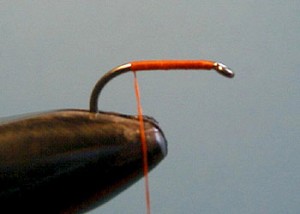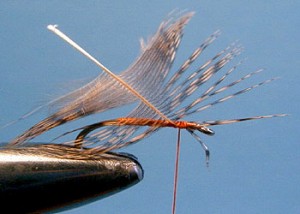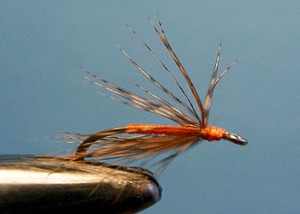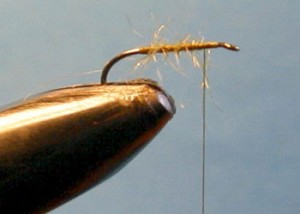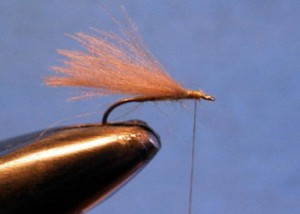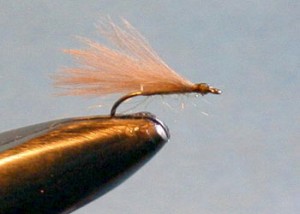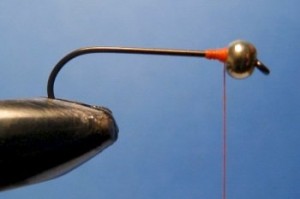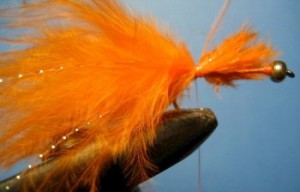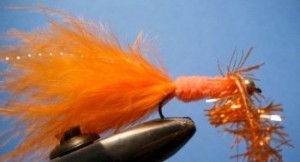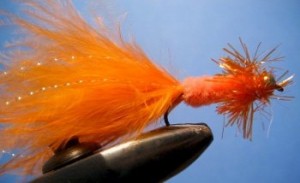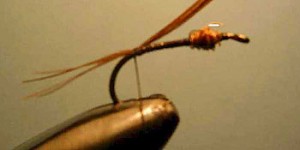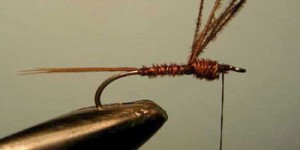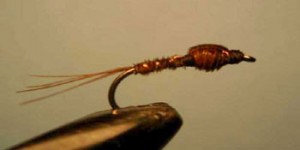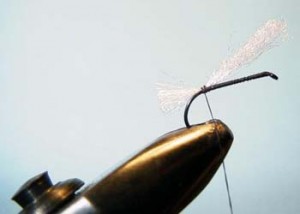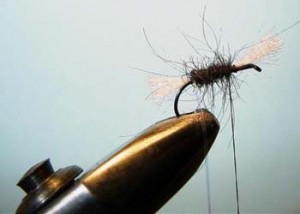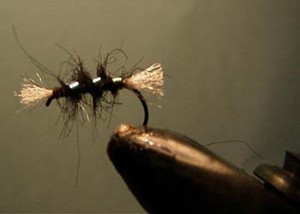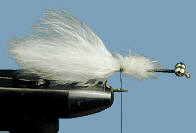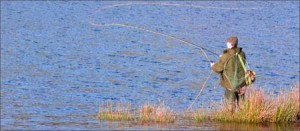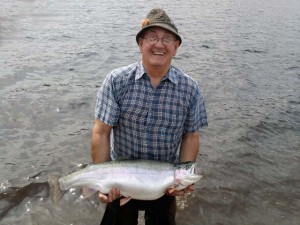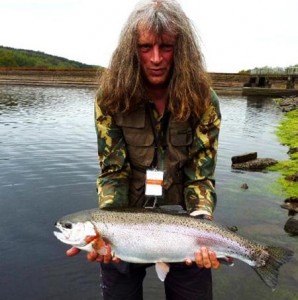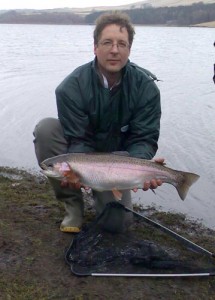The Red Copper Wire Nymph
Materials Required :
* Straight Shank Wet Fly Hook Sizes 12 – 16
*Fine Red Copper Wire
*Clear Varnish
Tying :
1. Place hook in vice and position the wire in the centre of the hook shank with some wire facing towards the bend. Wind in open turns towards the eye and do two turns close together behind the eye and break the wire off.
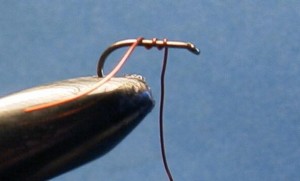
2. Take the other wire down and around the bend in open turns and break off and place a light coat of varnish over the wire to prevent it sliding on the hook.
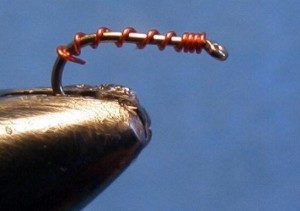
It is usually fished on a floating line and is either left static or retrieved very slowly and bites are generally very positive. Maybe there is just a slight suggestion of bloodworm. If you have the patience it is an extremely effective fly especially on hard fished waters.
We find that by far the best colour is red copper wire and normal copper is nothing like as effective.

